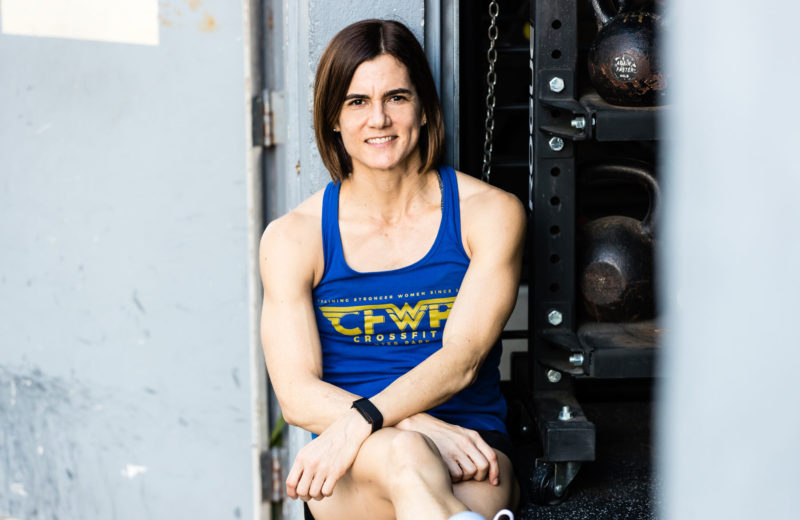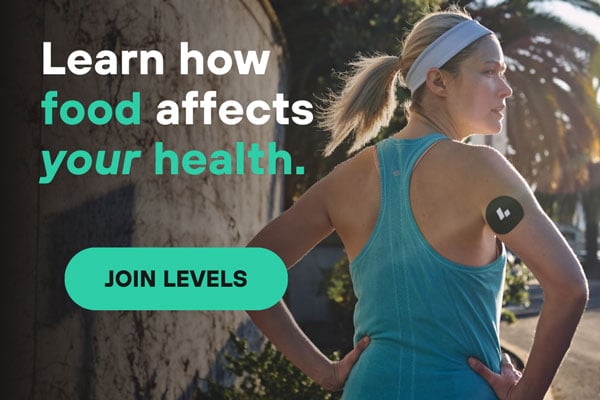Member Profile
Who: Stephanie Nickitas, 45
Where: Winter Park, Florida
Time with Levels: Off and on since fall 2020
Most Useful Takeaway: She has a higher glucose spike eating the same thing if fatigued and stressed compared to well-rested and recovered.
What was your health like before Levels?
My entire life has centered around sports and fitness. I was playing tennis by age 5 and went on to play collegiate and professional tennis at a high level. Later, I coached Division 1 collegiate tennis for 15 years. I found CrossFit in 2010, and it has been my passion ever since. I opened a CrossFit gym in 2013 and have been able to share my knowledge and experience with so many others since then.
What made you want to put a CGM on your arm?
I’ve always approached health and wellness in a preventative way. Rather than trying to find a pill to fix broken things, I’m an advocate of doing what I can to preemptively stop potential problems from progressing. Once I saw that Levels was making CGMs accessible to more people, I wanted to try it out.
Also, a good friend and coach at my CrossFit gym who had Type 1 diabetes talked to me about wearing a CGM and how he had to be very in tune with his glucose numbers. I realized that wearing a CGM could also allow me to gain insight into what’s happening in my body.
Learn more:
What did you notice about how your food habits impacted your blood glucose?
Before I consume a heavy dose of carbs, I can help regulate the spikes by changing the order in which I eat the meal’s components. For example, I might eat a poke bowl with brown rice, tuna, and veggies like spinach and avocado. So, I’ll eat the avocado and tuna first to level out my blood sugar reaction to the brown rice.
At first, I got worried about spikes, but I got great feedback from Levels Support. If I ate a meal high in carbohydrates (rice), I’d see a spike. It would come down relatively quickly, but then I’d get a second spike. I learned that having a double spike—a biphasic spike—shows that my body has good metabolic flexibility. Carbs get vilified in the fitness and athletics world, but as long as I’m coming down from these glucose spikes, I know I’m okay.
I was also surprised to sometimes see a small spike after consuming a post-workout protein shake or eating casein pudding before bed. Then, I learned about the process of gluconeogenesis—a metabolic pathway that results in the generation of glucose from specific non-carbohydrate carbon substrates.
What non-diet things did you learn from wearing the CGM?
Many of my workouts are high-intensity and can cause significant spikes in my blood glucose. At first, it was a bit shocking to see, but it helped me further understand that some stressors are good for you.
Infrared sauna is another one. We have one in the gym, and after a session in a really hot sauna, I’ll get a spike. Similar to exercise, sauna is another good stressor on the body. So, I’m okay with seeing that glucose rise.
I also wear a Whoop, and it’s interesting to see how my CGM data plays into my sleep data. There’s a real difference in my glucose control between when I eat something when recovered—well slept, low cortisol level—compared to when I’m running on less sleep, more stress, or my body is fighting off an illness. I might eat a banana after a good night of sleep, and I’ll see a lower spike than if I trained hard and only slept for five hours. The spike can be 30 or 40 points higher, and that’s all because my body is more stressed out.
When it comes to my workouts, I can tell the difference if I go into the workout fasted versus having eaten something. (That’s usually coffee, a protein bar, a carb drink, and amino acids.) If I’m fasted, my glucose is low, so making it through a longer HIIT workout is a bit more difficult. On my active recovery days, I usually do a fasted cardio session. I find drinking black coffee beforehand is okay for steady-state cardio, and I don’t see any spikes.
You stopped wearing the CGM for a while but are wearing it now. What do you hope to take away from the restart?
Nowadays, we have so much at our fingertips with wearables that we can go overboard and become too reliant on them. We can spend too much time thinking about data and not enjoying life. So, it’s good to take a mental reprieve and go by feel. I don’t have an underlying health condition, such as diabetes or prediabetes, that I’m watching, so the break is okay.
Things can change inside our bodies as we age, and checking back in and having that reset is a great tool. I love how the flexibility of Levels allows me to do this.










